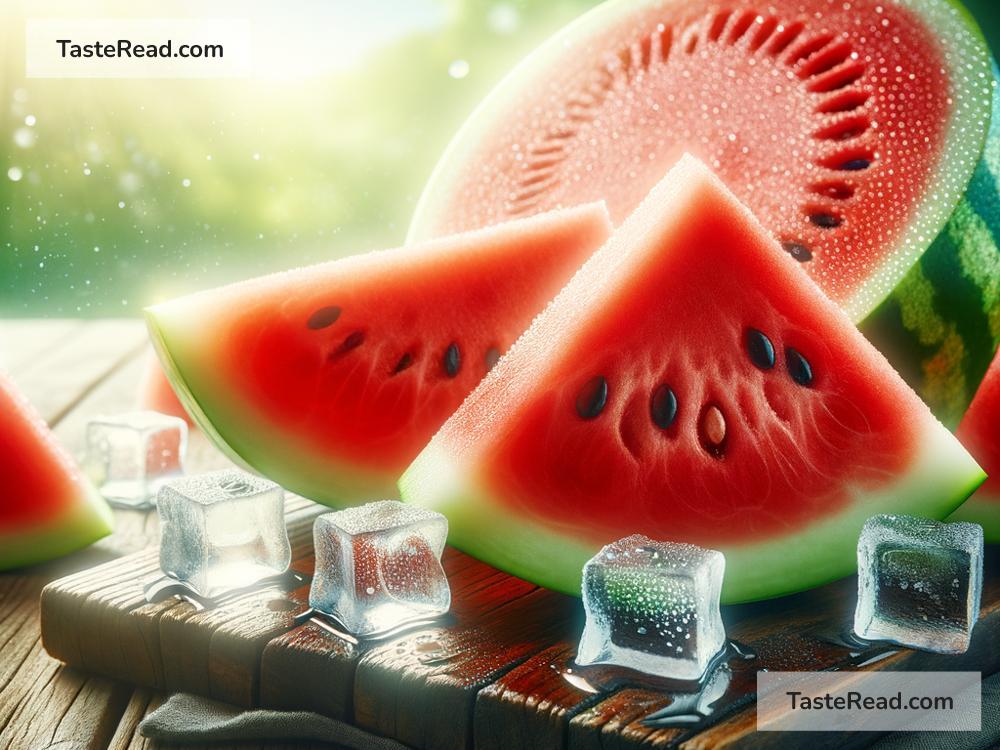Why Fruits Like Watermelon Taste Better When Chilled
Have you ever noticed how much better watermelon tastes when it’s cold? On a hot summer day, biting into a chilled slice feels refreshing, satisfying, and full of flavor. But why is this the case? Why do fruits like watermelon seem to taste better when they’re served straight out of the fridge? In this article, we’ll explore the reasons behind this phenomenon and learn why making your fruits cold can make them even more enjoyable.
The Refreshing Power of Coldness
One of the main reasons watermelon tastes better when chilled is because cold foods and drinks are naturally more refreshing, especially during warm weather. When the temperature rises, our bodies crave cool things to help us stay comfortable and hydrated. Cold items help lower our body temperature and make us feel good.
Watermelon itself is already hydrating—it’s made up of about 92% water! By chilling it, you make that hydration feel even more satisfying. Instead of just chewing on a watery, lukewarm fruit, you get cool, thirst-quenching bites that instantly soothe you. That’s why cold watermelon feels so much more comforting than warm watermelon on a sunny day.
Temperature and Taste
The temperature of food can greatly affect how you perceive its taste. When foods are warm or hot, certain flavors and aromas become stronger because heat releases more molecules into the air. This is why hot coffee smells so good or why a fresh-baked pie has a stronger scent than a cold one. In the case of watermelon, heat can amplify its sweetness, but it can also make the fruit feel heavy or overly sugary.
On the other hand, cold temperatures tend to mute strong flavors slightly while making lighter, refreshing notes stand out. Chilling watermelon focuses your attention on its crisp texture and juicy, light sweetness. It feels clean and more pleasant in your mouth, especially when compared to a room-temperature watermelon, which might taste flat or overly soft.
The Magic of Texture
Watermelon’s texture changes slightly at different temperatures. When it’s warm, the fruit might feel a little mushy or soft—like it’s losing firmness. But when you refrigerate it, the cold temperature keeps the watermelon crisp and firm. That crunchiness when you bite into a cold watermelon is part of what makes it so enjoyable.
Imagine eating a watermelon that’s been sitting out in the patio heat all day. It might taste okay, but it might feel too soft and slimy. Now compare that to a cold, crisp piece of watermelon straight from the fridge—it’s firm, refreshing, and bursting with juice. Chilling the fruit helps enhance its texture, making each bite more satisfying.
Sweetness and Flavor Balance
Interestingly, chilling watermelon also seems to balance its flavor. While it doesn’t make the fruit sweeter (the sugar content stays the same), the cold temperature changes how sweet it tastes to your tongue. When foods are cold, your taste receptors for sweetness work differently than when foods are warm. Instead of tasting overly sugary, you’ll notice a more subtle and balanced sweetness.
Cold watermelon also complements its natural “watery” taste, which is very mild and refreshing. The coolness enhances the clean and light qualities of the fruit. Warm watermelon, on the other hand, might taste overly sweet or even bland, which is one reason why people prefer their watermelon chilled.
Science Behind Cooling Fruit
The science behind cooling fruit goes beyond simple taste and texture. When you refrigerate fruits like watermelon, the cold temperature slows down the natural breakdown of sugars and other components inside the fruit. It keeps the fruit fresher for longer, preserving its peak flavor and juiciness. So, not only does chilled watermelon feel better to eat, but it’s also better preserved than a room-temperature fruit that might decay faster.
In addition, chilling watermelon eliminates the risk of bacteria growing in the fruit due to warm temperatures. When fruits like watermelon are left out in the heat, they can over-ripen or spoil more quickly, leading to unpleasant flavors. Keeping your watermelon cold ensures it tastes fresh for a longer time.
Tips for Enjoying Cold Watermelon
If you want to get the best experience with chilled watermelon, here are a few tips to try:
-
Refrigerate Before Eating: Keep your watermelon in the fridge for at least a few hours before serving. If you’re short on time, cut the watermelon into slices and place them in a bowl of ice water to cool it down faster.
-
Add a Twist: For an extra burst of flavor, sprinkle a pinch of salt or squeeze some lime juice onto your cold watermelon slices. The combination of salt, lime, and chilled watermelon can be magical.
-
Experiment with Other Fruits: The same idea applies to other thirst-quenching fruits like cantaloupe, honeydew, oranges, and grapes. Try chilling them for the ultimate refreshing snack.
Conclusion
Overall, watermelon tastes better when chilled because of its refreshing coolness, improved texture, balanced sweetness, and fresher flavor. On a hot day, a cold slice of watermelon is like nature’s perfect treat to keep you cool and hydrated. Next time you eat watermelon—or any juicy fruits—try chilling them first and see how much better they taste. You might just fall in love with how refreshing and satisfying they are!


